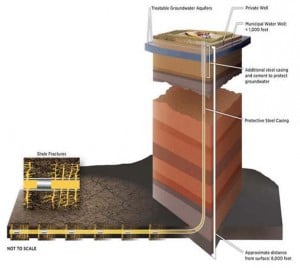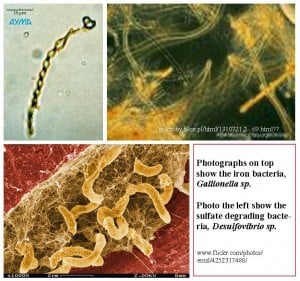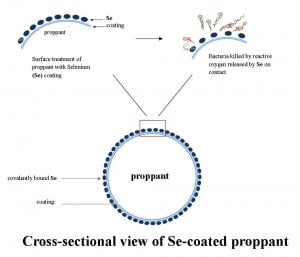Fracking ! Sounds like a curse word, and for some people along the Marcellus Shale regions between New York and West Virginia, it already is. Or, it may sound something like an illegal activity folks engage in somewhere in a dark back alley. And, that also reminds me of the word “fragging” used by soldiers usually against their own senior officers, often involving a fragmentation grenade without the pin. English is such a flexible language!
For those who are not familiar with the ‘fracking” business, let me give you a quick run down.
The Marcellus Shale Formation, a geologic feature located between New York State and West Virginia, holds an estimated 262 trillion cubic feet of extractable natural gas reserves. Although this resource has been known for a century, the Marcellus shale deposit became important in the last two decades because of the depletion of other easily accessible gas reserves, the increasing price of oil and the development of the hydraulic fracturing technology by Halliburton that made it feasible to extract natural gas. Hydraulic fracturing or fracking for short is a process wherein fluid containing sand is pushed at high pressure through a well bore deep into the shale formation to create man-made fractures. The hydraulic fracturing process involves injection of proppants, typically sand or ceramic beads that are lodged inside the shale to keep the fracture open. The fractured shale allows free flow of natural gas and oil into the pipeline that brings them to the surface for collection. Over a million wells have been drilled in the Marcellus shale through hydraulic fracturing.
Blame it on the bugs. Anaerobic iron and sulfate degrading bacteria rapidly proliferate in the fracturing fluids, causing corrosion of the pipes and clogging of the proppants. Inevitably biocides had to be included in the fracturing fluid to inhibit bacterial growth to keep the gas flowing. However, in recent years, there has been a tremendous public concern about the environmental impact associated with hydraulic fracturing and, in particular, the possible contamination of the aquifer and nearby streams by biocides and other chemicals present in the fracturing fluid. This triggered the frantic search for more environmentally benign options to keep anaerobic organisms from proliferating, despite the insistence of the oil industry that the technology is safe. Considering the economic and strategic value of extracting US oil-gas reserves, an alternative technology needs to be developed as soon as possible to solve this environmental concern. People are wary of corporations proclaiming safety and it is better for companies to solve the problem than fighting the public perception of another corporate-led environmental catastrophe.
Poseidon’s position on this matter? I am neither pro nor con to fracking. I think fracking is essential to our country’s energy independence and the continued employment of a whole lot of people during these dire economic times; the industry estimates 280,000 are employed or will be employed. But, I also think the industry must allay the legitimate fears of the public quickly by solving the issue and finding an alternative option to improve the system. I am sure you are thinking that sitting on the fence on this fracking problem is not a healthy thing to do. I neither relish the ire of the Pennsylvanians nor like being at the very bottom of the list in an oil industry event (not that I have ever been on any invitation list; not yet anyway).
What to do then? At the risk of stopping all natural gas extraction and exploration, it is imperative that a solution be developed soon to prevent bacterial overgrowth in fracturing wells. Because it takes only a small amount of bacteria to contaminate the well, introduction of bacteria-free fluids or other technologies proposed to date have had marginal impact on the overall problem. A biocidal approach is still the best method. We still need to get those Gallionella and Desulfovibrio bacteria from clogging the wells and corroding the pipes. However, the biocidal material should be environmentally friendly and must not freely diffuse away from the bore hole. This is where the daunting challenges lie.
Technological advances often times are not at the same pace with the response necessary to negate environmental issues that result from catastrophic failure or unforeseen damage. The case in point is the BP Deepwater Horizon oil spill in the Gulf of Mexico. For this reason Poseidon has embarked on an ambitious program, called the Nereus Project, to develop technologies that help ameliorate environmental problems associated with technological advances. While developing technologies for oil spill cleanup, the Nereus Project has also been looking at alternative options that would prevent biocidal actives from leaching out to the environment from fracking fluids.
This fracking issue is a hot topic. Tempers are flared, businesses are at stake, livelihoods are threatened and catastrophes, both real and imagined, are all in the now time frame. New technology development takes time and tons of money. But, scientific advances in other fields might be applied here. It is just a matter of looking and selecting the right ones that are available. This time we got lucky.
On July 21, 2010, Poseidon Sciences and Selenium, Ltd. entered into a strategic partnership to develop coatings containing covalently bound selenium [Se]. Why Se and not silver or copper? Only Se can be permanently attached to a surface and yet continue to be biologically active. Se is approved by the FDA as a nutritional supplement as an essential nutrient and it also possesses anti-bacterial properties through the release of reactive oxygen species, such as hydrogen peroxide. Upon contact with Se-treated surface, the reactive oxygen released by Se kills the bacteria on contact, thereby preventing biofilm formation and clogging. This killing effect is short range and does not extend far from the coated surface. A “green technology,” Selenium’s SeLECT™ technology was originally developed within the Texas Tech University [TTU] System by Dr. Ted Reid and Dr. Julian Spallholz, co-chief scientists of Selenium, Ltd. and TTU professors. This proprietary technology already achieved FDA 510(k) approval for two separate Class II medical devices and the first coated antimicrobial orthodontic products were introduced to the market in 2009 to prevent dental plaques.
When applied to industrial applications, Selenium’s patented SeLECT™ technology is marketed under the name SeGuard™. Because it is bound permanently to the coating and yet remains bioactive, Se does not have to leave the surface to exert its antimicrobial action. Thus, leaching of SeGuard™ to the environment is prevented. This technology will find use in the industry as a coating on proppants, sand and other materials used in hydraulic fracturing and as coatings on the iron pipes used in boreholes. Covalently bound SeGuard™ on the surface of ceramic proppants for an example will be the next generation of non-leaching, environmentally-friendly biocidal technology.
If this essential nutrient for the human body is also good enough for our teeth, kills bacteria on contact and doesn’t leave the surface, what else can we ask for?
Where to go from here? We are still in the process of proving the concept against iron and sulfur reducing bacteria. And, we are very optimistic since Se’s antimicrobial effect is universal. How to make this technology work for the fracking industry will need some serious collaboration with the oil industry players and the EPA. We do need to act faster than usual to make this happen.
Since a vital strategic industry, people’s livelihood and the environment are at stake here, only really serious “fracking” people need apply.
Jonathan R. Matias
Poseidon Sciences Group
New York, NY
Who is Nereus?
In Greek Mythology, Nereus was the son of the Titans—Pontus (the Sea) and Gaia (the Earth). Always known as the “Old Man of the Sea” for his truthfulness and virtue, Nereus fathered the Nereids or sea nymphs, known for their friendly help to mariners in stormy seas.
For further reading, please see these links:
This blog entry is derived in part from a July 22, 2010 Poseidon Sciences newsletter:
Regarding the Nereus Project:
http://www.poseidonsciences.com/nereus.html
On the selenium technology:
http://www.selenbio.com/technology/index.html#coatings
On the fracking problem:
http://green.blogs.nytimes.com/2010/07/23/passions-on-display-at-e-p-a-meeting/?src=me&ref=science
http://green.blogs.nytimes.com/2010/07/22/huge-turnout-for-e-p-a-fracking-hearing/



